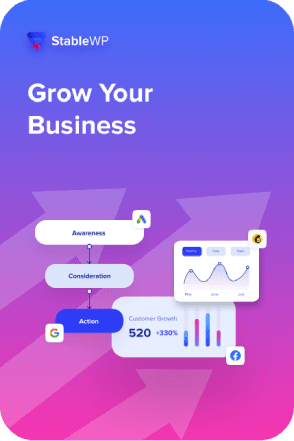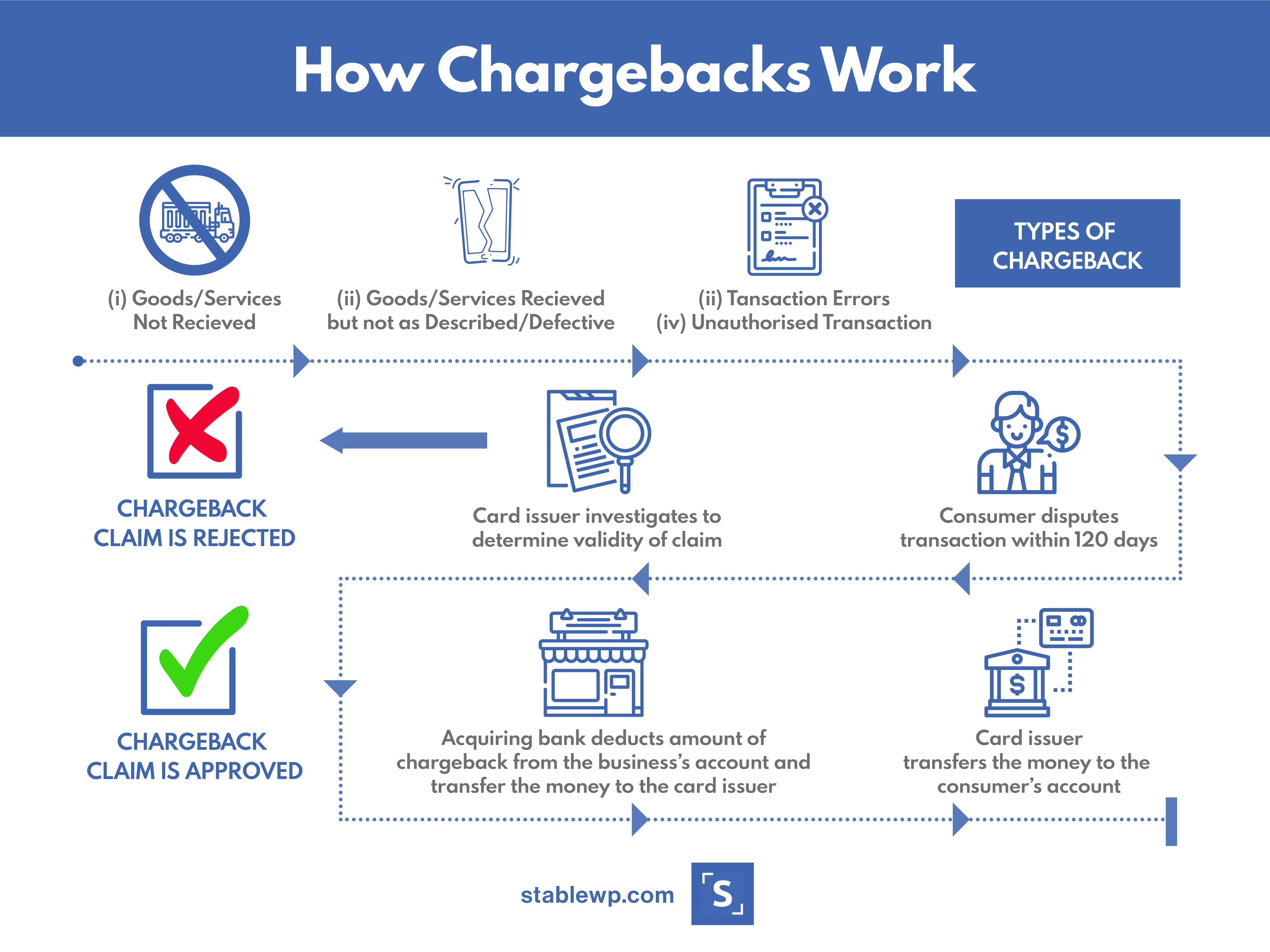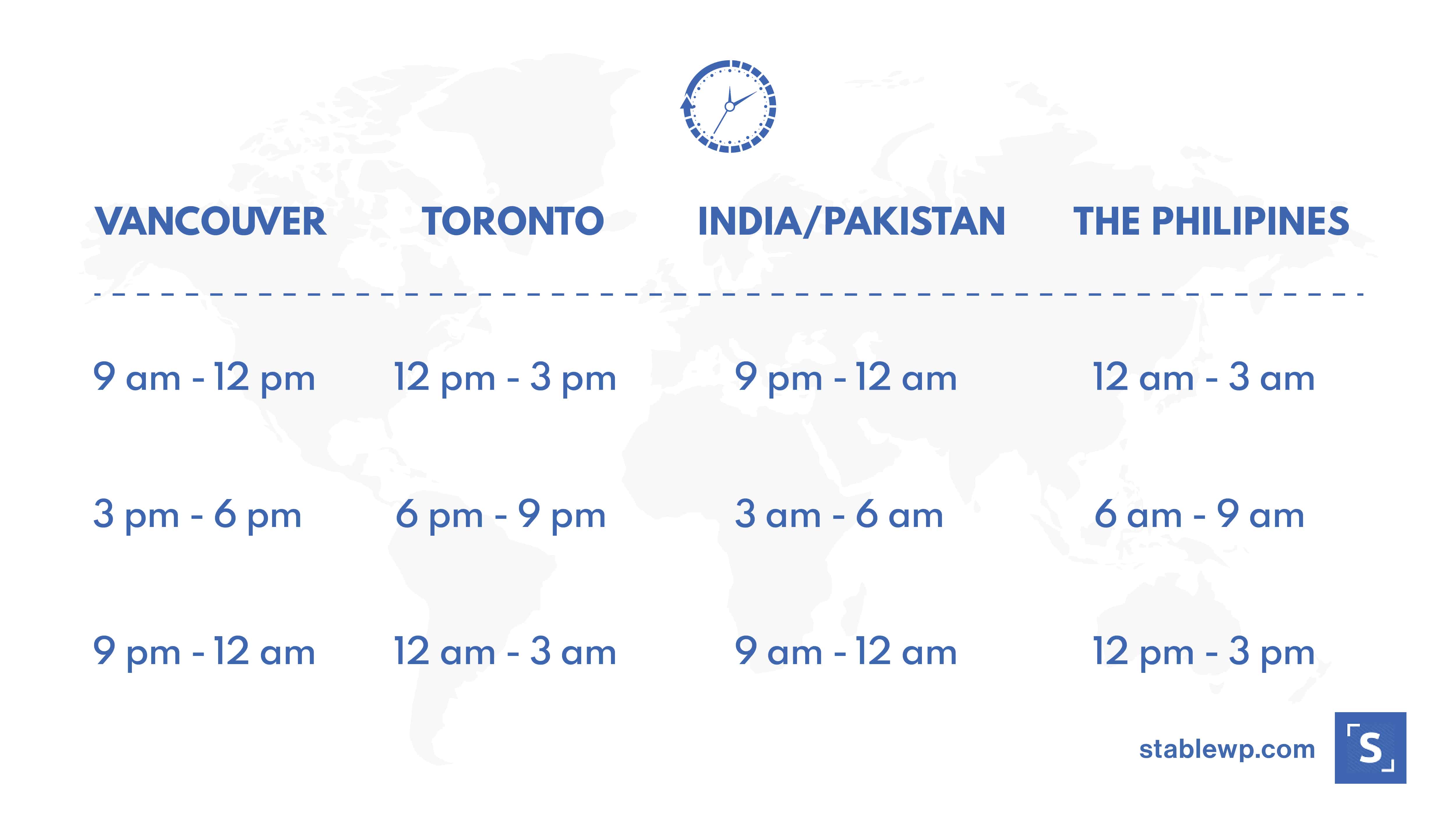If you’ve explored any list of ideas for starting an online business, there’s a good chance you’ve heard of “dropshipping” and perhaps even its spinoff known as “drop servicing.”
The drop servicing business model is becoming more and more popular as it promises a good revenue stream without a huge investment.
But, you’re likely wondering what exactly drop servicing is, how it works, how it compares to dropshipping, as well as how to get started.
In this guide, you’ll learn all you need to know about drop servicing. You’ll also learn the biggest pitfalls to avoid, to ensure you build a sustainable and profitable business reselling services.
So, let’s dive in!
Table of Contents
What is drop servicing
Drop servicing is a business model where you sell services that you don’t fulfill yourself, rather you outsource the work to a freelancer or an agency that completes a project while you’re only in charge of selling the service to a client.
That means it’s a form of outsourcing or “service arbitrage,” which is just a fancy term for reselling. You play the role of a middleman that markets and sells the service to clients, and the service provider completes the project behind the scenes.

If you’re not familiar with drop servicing, it’s basically the dropshipping model but for services instead of products. What’s important to note right off the bat is that this model isn’t anything new. In fact, it’s been around for many years.
Drop servicing model is best understood through some examples:
- You bring your jacket to a dry-cleaning business, but they end up sending it to a cleaning factory rather than washing it in the store. That’s drop servicing.
- You go to a local bakery expecting fresh baked goods, but they actually get their pastries from a factory rather than baking it in house. That’s drop servicing, too.
These real-world examples show that drop servicing can work with both tangible and intangible end results, but it’s most frequently discovered these days with online services like digital marketing or web design.
Chances are, you’ve actually bought products from a dropshipper before and you may have even bought from a drop service as well.
And that’s what’s tricky about it!
As a client, you may never know the difference between a service delivered directly by a service provider and one sold by a drop service business.
How does drop servicing work
The process of starting a drop service business is extremely simple. You need to put up a nice looking website selling the service you want people to pay for, and then you go out and find someone who will actually do the work.
In the modern era, the drop servicing business model often goes like this:
- You design a website offering marketing services
- Then you promote and advertise the service to get clients
- Next, you forward the project details to a service provider to do the work
- Finally, once complete, you deliver the work to the client
Drop servicing is all about selling a service at a high price and then finding someone to do the work at a lower cost, while you pocket the difference.
What can you drop service
The reason why drop servicing may seem so popular these days is that everyone wants to tout that you can drop service anything, and that’s just about true.
While most drop service businesses offer a digital marketing service of some sort, like web development, logo design, SEO, etc., you can drop service anything as long as you have the two necessary elements:
- a person willing to do the work for X amount
- a client willing to pay even more
Is drop servicing legal
The drop servicing business model is completely legal. There’s nothing against the law about reselling someone else’s services and making money off the price difference.
The fact is, drop servicing works just like any other business model: Buy low, sell high.
As long as you can find a client willing to pay your asking price, and a person willing to do the work for a certain amount less, it’s entirely legal to operate a drop service business.
The question is, is it sustainable?
I’ll show you how you can create a sustainable and profitable drop servicing business in a later section. For now, let’s touch on what you need to get started.
What you need to get started with drop servicing
One reason why the drop service business model is being promoted all over the web as a type of quick money-making scheme is that it’s easy to convince people to try it.
Many so-called “coaches” and “gurus” will sell you on the idea, profiting off of their training, tools, or affiliate links that offer hosting and other services.
But you don’t have to buy into any such things!
All you need to do to start a drop service business is identify a service that you can sell for a premium, find someone willing to work for less, and then set up a website where you advertise it.
You might choose to invest in Facebook or Google ads, but it’s entirely optional.
With these low entry requirements, all you truly need is dedication and a strong mindset, and you could start a drop servicing business even more easily than you can start dropshipping.
3X Your Business in 90 Days
Get an unfair advantage with our powerful 3-step funnel strategy and learn how to increase leads and sales by 300% fast.

Difference between dropshipping and drop servicing
When it comes to comparing dropshipping to drop servicing, there is a key difference and it’s simple to remember: dropshipping deals with products that are physically shipped to the buyer. Meanwhile, drop servicing provides a service.
As said at the start of this guide, dropshipping and drop servicing are two very similar business models, and that’s entirely true. In fact, you can think of drop servicing as basically a spinoff of the dropshipping model.
Both have been around for years, almost since the beginning of e-commerce and the online business itself.
The part where you may get hung up in the details is that a drop service business may produce a product in the end, like that bakery that’s buying from a factory.
The key thing to remember is that dropshipping involves actually shipping the product to the buyer.
For instance, say you purchase a t-shirt from an online shop. If that shop is a dropshipping business, they don’t actually have the t-shirt on-hand.
Instead, once you place an order, they’re going to purchase it from the seller on Alibaba or another retailer’s website where they originally found it, or they may have the manufacturer ship it directly to you.

In any case, the dropshipping business never actually touches your item. They’re merely the middleman. They find clothes that are selling for X amount and then they put pictures up on their website selling them for Y. You pay more than they’re being sold for elsewhere, giving the middleman a profit.
This is similar to the drop service model example we went through earlier where the drop service business, like your local dry cleaner, is charging $39 for cleaning your suit when they’re just going to ship it to a factory that only costs them $18.
You’re happy just to get your suit back clean, but they get to pocket $21 for doing practically nothing but selling the service.
Ultimately, dropshipping and drop servicing are very similar models. So, if you’re trying to start a business, you may be left wondering which one is better.
Dropshipping vs. drop servicing – which is better
For those venturing into an online startup for perhaps the first time, both dropshipping and drop servicing can seem like profitable business models with very little barrier to entry.
However, while the models are similar, one ultimately holds more risk. Can you guess which?
In a drop servicing business, you typically get paid upfront and you’ll use that money to hire a freelancer or another party to do the work. That work is then delivered to the client.
The risk here boils down to the service provider not doing the work to the client’s specifications or your client not being satisfied with the third-party’s work overall (perhaps leading to them demanding a refund, even though you already paid the third-party).
That means drop servicing has pretty low risk, especially since you can always put satisfaction guarantees and no refund policies to work for you, asking the third-party to refund you if you aren’t happy and perhaps telling clients that you don’t offer refunds under any circumstances. You might end up with some unhappy clients if your third-party isn’t up-to-par, but in the end, you still come out profitable.
With dropshipping, on the other hand, there tends to be a lot of logistical headaches that the “top sellers” on YouTube and in video courses just don’t want to tell you about.
Have you noticed how many people are selling dropshipping courses these days?

That’s likely because it’s far less of a headache, and less risky, to teach people how to get into dropshipping than to do it yourself.
With that said, let’s take a closer look at the risks that plague dropshipping.
First and foremost, remember the process. You need to locate items available for sale on Alibaba or another direct-from-manufacturer website and then list them in your own store for a marked-up price.
Your buyers will pay up-front for your products and cover any shipping fees you charge, but that’s when the headache begins. When shipping overseas from manufacturers directly, expect to deal with major delays, lost packages, and even the supplier sending the wrong product or order entirely.
Meanwhile, your buyers are fuming and your stuck eating all the fees of refunds, returns, and reshipments.
Even worse, the COVID-19 Coronavirus situation has made it very hard to run a sustainable dropshipping business due to numerous delays and uncertainty with overseas transportation.
Not to mention, with both of these businesses, you run the risk of chargebacks, which are instances where customers can get refunds from their payment processor or credit card provider if they’re unhappy with the end result or if their order is late, almost regardless of what your refund policy says.

Of course, now that we’ve gone through the risks and downsides of both, let’s briefly consider the advantages of one over the other. When it comes to the upside, dropshipping often wins out thanks to its shorter sales cycle, which can be achieved with careful product selection and tools that allow you to automate part of the ordering process.
On the other hand, drop servicing is often a B2B service, meaning you’re a business paying another business to do the service your client is waiting for. Your client may also be a business, as is the case with most digital marketing services, and all that business means communication and networking are required to find partners and clients.
The biggest advantage? With the right partner, you won’t have all the supplier-induced headaches that dropshippers deal with.
Plus, don’t forget: Drop servicing businesses generally entail very low startup costs and you won’t deal with all the shipping and transaction fees, either!
Why avoid freelancers and partner with a white-label agency instead
We’ve just touched on a long list of risks associated with drop shipping, but with drop servicing being relatively low risk, why wouldn’t you want to pursue it as a business model?
In short, while you may not be as likely to end up losing money with a drop servicing business, the chances of a sustainable profit are low.
That’s because typical drop service businesses tend to turn to UpWork and Fiverr to find freelancers to provide their services.

Issue with overseas outsourcing #1 – Quality of service
The first issue with this is a matter of quality. There are some really talented people on these sites, but they tend to charge a moderate or high rate which means you’d have a very small profit margin by the time you charge an even higher rate to your clients.
So, to profit, you’ll end up hiring some of the cheapest workers on these platforms, and that generally means newbies (which may be great, but will eventually move up in the ranks and raise their prices) or people who work for a bare minimum and, therefore, put in the minimum amount of effort.
In other words, the biggest struggle of running a drop servicing business is finding reliable freelancers at a rate you can afford.
And, even if you find freelancers able to consistently deliver the quality you’re looking for, they may not be around for long. These people come and go as they find higher-paying opportunities and better work environments overall.
After all, if you can be charging X amount for their work unbeknownst to them, it’s only a matter of time before they realize they could be charging more, too.
Issue with overseas outsourcing #2 – Risk of a bad reputation
Meanwhile, when outsourcing to freelancers, you risk the reputation of your own brand or business. If you happen to be outsourcing and putting your own face and name to the service, that’s even worse.
Your reputation will be directly and perhaps irreversibly damaged should clients find that they’re getting unoriginal, plagiarized, or just poor-quality work that you perhaps didn’t check carefully enough yourself.
Issue with overseas outsourcing #3 – Dealing with overseas providers
Add to these risks the language barrier and time zone differences that often pose themselves as complications when outsourcing to affordable freelancers, and you’ll soon learn that managing projects and even meeting deadlines can be extremely difficult when outsourcing to freelance workers.

If those complications result in poor or failed deliveries, you end up with an unhappy client and perhaps a bad review.
So, what should you do instead? The biggest flaw with the drop service business model is the lack of reliability, consistency, and quality when outsourcing to affordable freelancers. That’s where a white-label marketing agency will come into play, and here’s why.
A white-label marketing agency may cost you more than that “budget-friendly” freelance who sells only because of their low price, but as the saying goes, you get what you pay for.
Advantage #1 of a local white-label agency partner – Access to a full team of professionals
White-label agencies have an established reputation behind them, and they’re more than just one person. An agency has a whole team working for them, skilled and armed with the right tools to get your projects done on-time and with consistent quality.
Meanwhile, your entire business isn’t reliant on one single person, as the agency will always maintain a team capable of scaling up to meet your needs, even as you continue taking on new clients thanks to happy referrals.
That means you stand to build a successful, long-term partnership with such an agency, putting you in the position to further streamline your workflow and perhaps even automate your business model.
Advantage #2 of a local white-label agency partner – Transparency
An often unmentioned aspect of working with a white-label agency that’s also extremely beneficial is that a white-label agency knows what you’re doing.
In other words, it’s no secret that you’re reselling their services, and they’re totally fine with it because you’re doing all the marketing and advertising that they don’t feel like dealing with.
On the other hand, a drop servicing business that’s outsourcing to freelancers would never want to tell the freelancers they’re doing that because that would lead them to inevitably charging more for their services, which they’re bound to end up doing anyway once you help build their reputation.
What is a white-label agency
A white-label marketing agency is an agency offering marketing services. The “white-label” part means they cater to resellers or drop service businesses like yours, knowing that you’re using their services for your own clients.
The reason why white-label agencies exist comes down to the simple laws of supply and demand. They come to be because there’s room for them in the market when drop service businesses like yours get tired of hiring freelancers at random.
After all, the benefits of working with a white-label agency over a freelancer are plentiful. To continue touching on some of the key factors, consider the consistent quality, improved communication, scalability, and the improved access to tools and manpower necessary to get your projects delivered on spec and on time.
Those are the things that define a white-label agency and set it apart from freelance services.
When is the right time to consider a white-label agency
If you’re trying to get a business up-and-running, you’re doing the right thing by starting your research early, because the best time to hire a white-label marketing agency is before you start selling.
Of course, if you have already begun looking for clients, it’s never too late to switch. The sooner you transition from freelancers to an agency, the sooner you’ll be able to start delivering consistently higher-quality services to your customers.
What to look for in a white-label marketing agency
If you’ve decided it’s time to partner with a white-label marketing agency, you’re on the track to success. You just need to consider a few critical factors to ensure you make an informed decision.
First, choose a partner that has the experience and knowledge necessary to complete your projects. Second, consider emphasizing the importance of an agency that works in your time zone to ease communications, or one with a 24/7 support team so details are never ignored.
Next, look for a white-label agency that has a proven track record. That means reading reviews both on and off their website and checking for complaints against them in the BBB. You may even ask for referrals from other companies in your industry to help you find the right partner.
Finally, the best agencies will offer a dedicated project manager to make sure your projects are never forgotten, overlooked, or late. This project manager should be your single point of contact to collect all the details and deadline information for your various projects and communicate those details with the team doing the work.
It will take time to find the right white-label marketing agency, but once you do, you’ll have greater peace of mind knowing that you’re partnering with real experts who are going to reliably be there for you for every project going forward.
Conclusion
The bottom line is that reselling services is a viable business model that can help you earn a stable revenue stream by connecting clients in need of a service with quality service providers. That’s why drop servicing is becoming one of the hottest global trends.
However, to truly run a sustainable and profitable business aim to partner with a reliable white-label agency. Avoid freelancers and outsourcing overseas as these are typically only temporary solutions that won’t bring you any stability or scalability.
Look for a local agency partner with a team and infrastructure to deliver on any project your clients demand. This will not only ensure a consistent and quality service for your clients, but also a good reputation for your business, less headache, better communication, and the potential to build a true brand.
If you’re interested in hiring white-label digital marketing and web design agency, check out our partnership program page. Join other successful solopreneurs and agencies that we helped scale.
And, as always, drop us a comment down below and share this guide with anyone looking for a comprehensive drop servicing guide.


